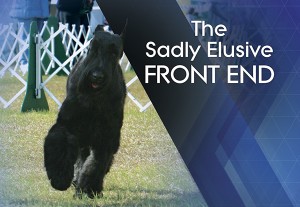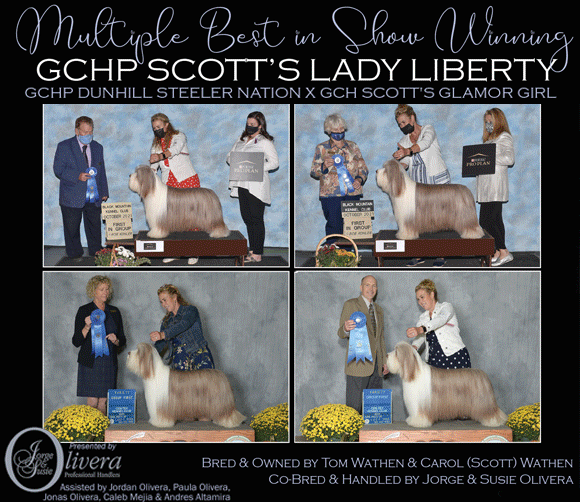The Sadly Elusive Front End
Click here to read the complete article
 By Sandy Weaver
By Sandy Weaver
Listen to conversations that include serious students of dogs–generally long-time, successful breeders, handlers and judges–and it won’t take long before they start talking about the sadly elusive front assembly. Somewhere between many and most show dogs have front ends that are lacking, and it shows on sidegait as well as on the down and back. Since it’s so sadly elusive, it’s time for a short reminder of what makes a front end great. Brush up on the basics in this article, go look for it in your own dogs, and then look to improve it in your breeding program.
A dog cannot be a great mover without a good front end. And since good front ends are scarce and getting scarcer in the show ring, the breeder who concentrates on consistently producing dogs with type and a good front is more likely to be out front in the ribbons and in demand for puppies and stud service. Most breeders find it easier to produce good rears, because they don’t carry as much of the dog’s weight and because they’re connected to the locomotion process by a ball-and-socket joint, which (when free of hip dysplasia) is much more stable than the muscles, ligaments, and tendons that connect the front to the locomotion process. Producing a front that matches a good rear is worth your time, attention, and work, because that’s how you produce a great mover.
In this article the discussion will be about breeds of dogs that tend to single-track, not double-tracking or four-tracking breeds. Since most breeds have a tendency to single-track as speed increases, this information is appropriate for most breeders. It is as applicable to toy dogs as it is to giant breeds, as each has a front constructed of the same pieces, designed to do the same job and needed to carry the same proportionate weight.
Click here to read the complete article
Short URL: http://caninechronicle.com/?p=216163
Comments are closed












